LOL Now you tell me...
After I already started on it.
I figured it would be a marginal increase, but when I saw the 4+ amps out of the buck the other day, I got excited, and came to the conclusion that this was the only missing piece to the puzzle.
It is finished now, I'll get pics put up in a few...
The fan runs from an auxiliary 8W panel, so there's no loss either way, other than some time and effort on it.
It's hard to say right now if there is any real improvement or not, I won't know until I see it perform in various conditions.
The fans are moving heat out of it, as the air is warm leaving the exhaust, but how much good it is doing is still left to be said.

Oh well, it was fun and I (possibly?) learned something from it... haha
Steve
EDIT - The pics:
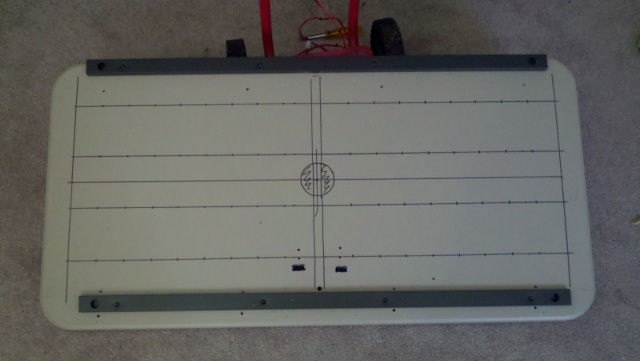
The holes all marked, ready for tooling.

The holes drilled. I went with a slightly different pattern than originally envisioned; and ended up revising them once again on the fly. I somehow missed the outer set of holes while I was drilling, and so rather than enlarging the outer sets, I drilled another set next to them where the bigger holes were supposed to go in the first place. Oh well.

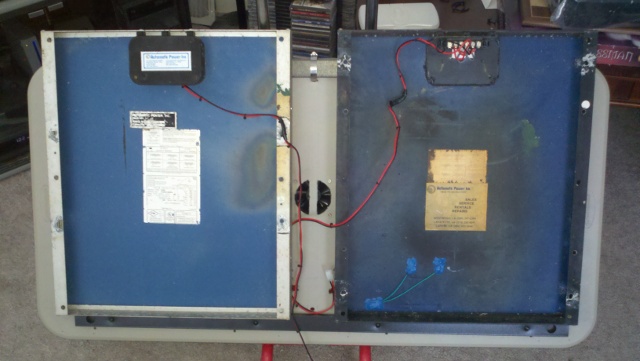
To do this properly (or as close to as possible), I had to carve out a majority of both junction boxes. They weren't really able to do their job as designed anymore anyway, so since this is a portable application and would not be left out in inclement weather, I did away with them as much as I possibly could in favor of cooling...
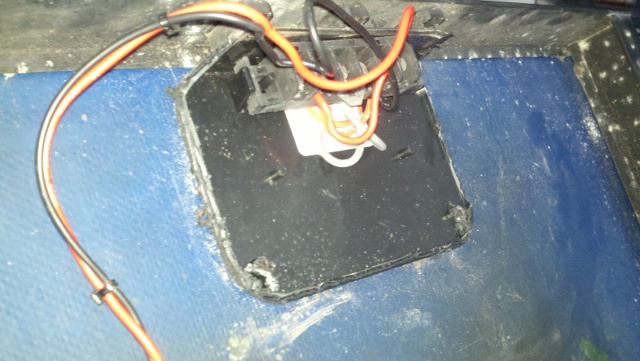
Close up of one of the modded J-Boxes.
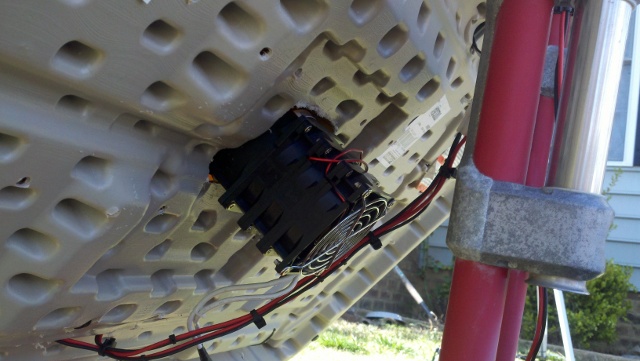
A closeup of the fan assembly mounted on the back side of the table. Doesn't work too bad, and can pump some decent air, but as DanG pointed out, a good portion of the heat is radiant, so without some kind of heatsink backing on the panels, the gains are minimal.

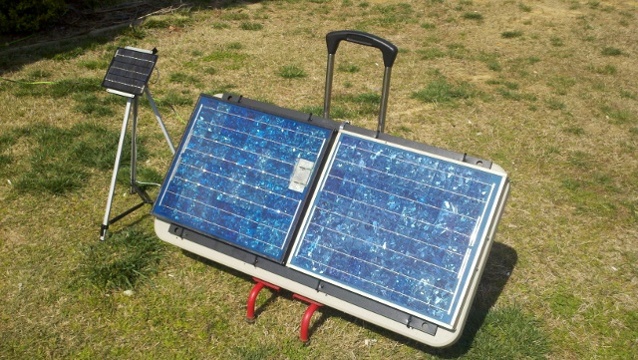
Here it is operational, with the auxiliary panel that powers the fans sitting on the left.
I don't know that I would do it the same if I did it again, time will tell. I wouldn't have bothered except the 8W panel is so small, it doesn't really find much use for very much else, and it would run the two fans (in series) rather well, so I ran with it.
Somehow, I envision a water cooled layout in a future version of this, but I doubt I would bother on another portable system. I could use that surplus heat for something else, but water cooling is clumsy in a portable implement, so the pros wouldn't really outweigh the cons, methinks.
Oh well, it was interesting, and it MIGHT give me some gain, will have to see when summer rolls around full throttle and run some tests to really find out.
Steve